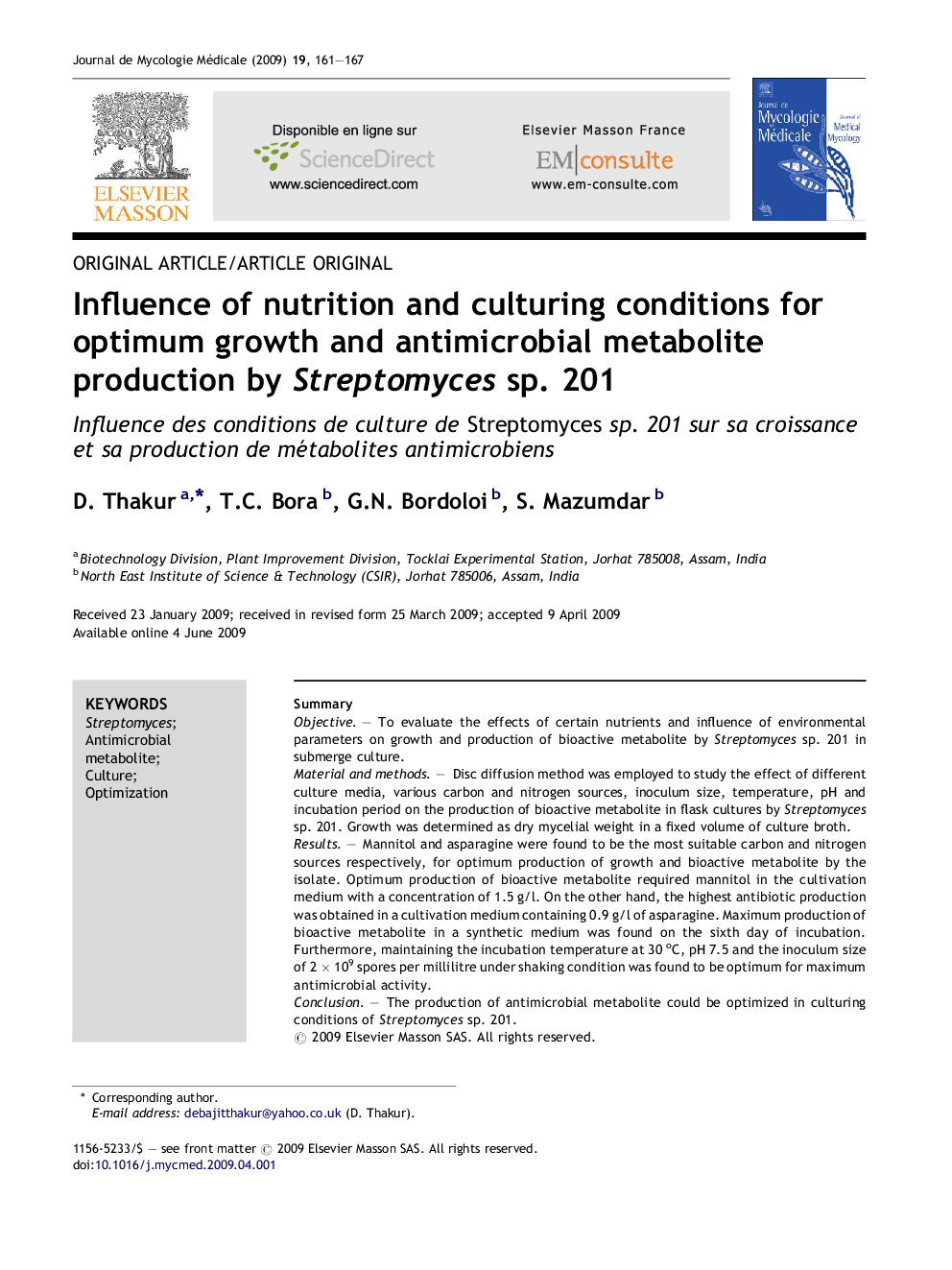| Article ID | Journal | Published Year | Pages | File Type |
|---|---|---|---|---|
| 3220206 | Journal de Mycologie Médicale / Journal of Medical Mycology | 2009 | 7 Pages |
SummaryObjectiveTo evaluate the effects of certain nutrients and influence of environmental parameters on growth and production of bioactive metabolite by Streptomyces sp. 201 in submerge culture.Material and methodsDisc diffusion method was employed to study the effect of different culture media, various carbon and nitrogen sources, inoculum size, temperature, pH and incubation period on the production of bioactive metabolite in flask cultures by Streptomyces sp. 201. Growth was determined as dry mycelial weight in a fixed volume of culture broth.ResultsMannitol and asparagine were found to be the most suitable carbon and nitrogen sources respectively, for optimum production of growth and bioactive metabolite by the isolate. Optimum production of bioactive metabolite required mannitol in the cultivation medium with a concentration of 1.5 g/l. On the other hand, the highest antibiotic production was obtained in a cultivation medium containing 0.9 g/l of asparagine. Maximum production of bioactive metabolite in a synthetic medium was found on the sixth day of incubation. Furthermore, maintaining the incubation temperature at 30 oC, pH 7.5 and the inoculum size of 2 × 109 spores per millilitre under shaking condition was found to be optimum for maximum antimicrobial activity.ConclusionThe production of antimicrobial metabolite could be optimized in culturing conditions of Streptomyces sp. 201.
RésuméObjectifÉvaluer les effets de diverses conditions de culture en milieu liquide de Streptomyces sp. 201 sur sa croissance et sa production de métabolites antimicrobiens.Matériel et méthodesLes effets de diverses sources de carbone et d’azote, de la taille des inocula, de températures d’incubation, du pH et de la durée d’incubation ont été évalués par la production de métabolites antimicrobiens ; leur activité a été mesurée par la méthode de diffusion par disques. La croissance a été évaluée par la mesure du poids sec d’un volume déterminé de milieu liquide.RésultatsLe mannitol (1,5 g/l) et l’asparagine (0,9 g/l) se sont montrés comme la meilleure source respectivement de carbone et d’azote pour la production de métabolite antimicrobien et la croissance optimales de la souche de Streptomyces étudiée. La production de métabolite est alors à son maximum après six jours de culture agitée à 30 °C., pH 7,5 avec un inoculum de 2 × 109 spores par millilitre.ConclusionLa production de métabolite antimicrobien peut être optimisée par des conditions de cultures appropriées de la souche de Streptomyces sp. 201.
